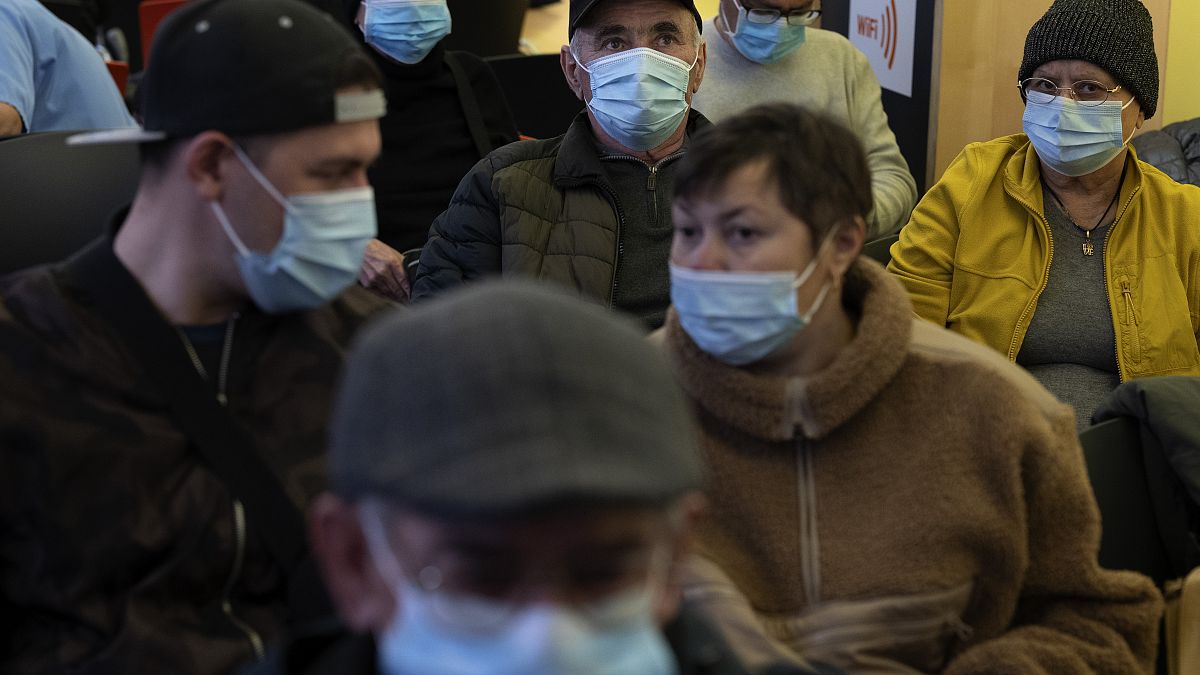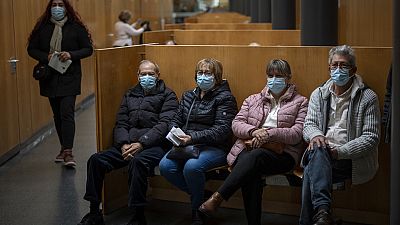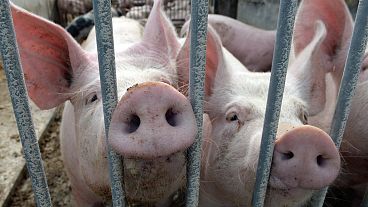The deaths of two men in Italy from flu this week made headlines in the country as cases of respiratory illnesses "intensify" in other EU countries.
Many European countries are in the throes of a seasonal flu epidemic, with Italy, in particular, facing one of its worst flu seasons in years.
Fabrizio Pregliasco, an associate health professor at the University of Milan, told Euronews Next that influenza typically causes thousands of deaths annually in Italy as, like other respiratory illnesses, it can worsen preexisting cardiac and respiratory pathologies or cause viral pneumonia.
Pregliasco said that this flu season was “the worst in terms of number of cases in recent years” and said that the H1N1 influenza strain in Italy accounts for 60 per cent of isolates in the surveillance system as well.
He said a “cocktail” of respiratory illnesses - flu, respiratory syncytial virus (RSV), and a new strain of COVID-19 - were circulating, amid low vaccination rates.
This was confirmed by World Health Organization (WHO) experts on Wednesday, who said there was a co-circulation of multiple pathogens in the Northern Hemisphere this year.
"This is causing a significant increase in burden and hospitalisations not just for COVID, for flu, but from these other pathogens as well," said Maria Van Kerkhove, the WHO's technical lead for COVID-19.
"We have low demand and uptake for vaccines that are available and vaccines for COVID and vaccines for influenza save lives, particularly among those who are most at risk," she added.
The European Centre for Disease Prevention and Control (ECDC) told Euronews Next that the influenza A(H1N1)pdm09 virus was indeed the “dominant” subtype of flu in the European Union.
It is a descendant of the so-called “swine flu” strain that caused the 2009 pandemic and is targeted by this year’s vaccine.
“There is currently no evidence that infections with influenza A(H1N1)pdm09 are more severe this year compared to previous seasons. Unfortunately, deaths from influenza are expected now that the flu season has started,” the ECDC added.
Italy’s High Institute for Health (ISS) added on Wednesday that while new cases of respiratory illnesses are at their "highest" levels, this peak does not present any anomalies and is in line with levels reported in other European countries.
Are influenza cases rising elsewhere in Europe?
Influenza activity has been intensifying across Europe since the end of 2023 with increases in most EU countries, according to the European Respiratory Virus Surveillance Summary.
Flu was circulating at higher levels in Europe than both COVID-19 and RSV, the respiratory virus that can cause bronchiolitis, in the last week of 2023.
Among severe respiratory infections, influenza test positivity increased to more than 10 per cent, which is "comparable to previous years at the start of the seasonal epidemic," the surveillance summary added in a report.
"The flu epidemic has begun," according to Germany’s Robert Koch Institute, which also added that influenza cases began increasing at the end of 2023.
"The influenza vaccination can still be useful even after a flu epidemic has started," the institute said. They added that there was a high number of COVID-19, flu, and RSV cases in the country.
Public Health France said at the beginning of January that there was a large increase in flu indicators across the country, with an epidemic in 10 regions and a "pre-epidemic phase" in three regions.
All three respiratory illnesses - COVID-19, RSV, and flu - continue to circulate at high levels, the agency said.
Spain reintroduced a mask mandate in hospitals this week due to rising cases and hospitalisations for respiratory illnesses, including flu which was circulating with “greater intensity” than other viruses.
Italy’s ISS already said last week that there was a high incidence of flu-like respiratory illnesses.
"Although it is impossible to predict exactly when the peak of cases will be reached, a sustained circulation is conceivable also in the coming weeks, facilitated by the reopening of schools," Anna Teresa Palamara, the director of the institute’s infectious diseases department, said in a statement.
She recommended in addition to getting vaccinated to be cautious around young children and elderly individuals who are at risk of more severe respiratory illness.



